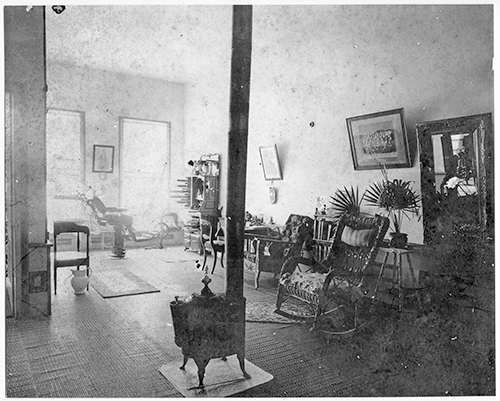

Sponsored by: Joe E. Sherer Jr., CDT & Mr. Tripp Sherer, CDT
The first known dentist to practice in South Carolina was Joseph de Labeaume, who arrived in Charleston from Paris in 1774. In larger American cities of the 18th and 19th centuries, dentists performed many of the same procedures they do today: pulling teeth, filling cavities, and making bridges and dentures.
By the 18th century, dentistry was benefitting from an abundance of new discoveries, materials, and techniques, ranging from the introduction of nitrous oxide, ether, and cocaine to manage pain to the discovery of x-rays to improve diagnostics.
This office represents a typical dental office of the mid-to late-19th century. A well appointed office of this period included a reclining dental chair, which was placed in front of a window to take advantage of bright natural light. In the absence of running water piped to the office, a reservoir spittoon was filled with fresh water that was drawn to the basin by a pump handle; wastewater was collected in the middle compartment for disposal.
The foot-pedal drill, first introduced in 1871, replaced hand-powered drills, increasing the speed with which the dentist could prepare the tooth and reducing the patient’s discomfort. The foot-powered lathe was used to sharpen instruments or finish dental appliances.


Two views of the office of Dr. Herbert Michel Hucks, Georgetown, S.C., c. 1902. Dr. Hucks was a graduate of the University of Maryland/Baltimore Dental College in 1902.
Gift of Dr. Edward L. Welsh.